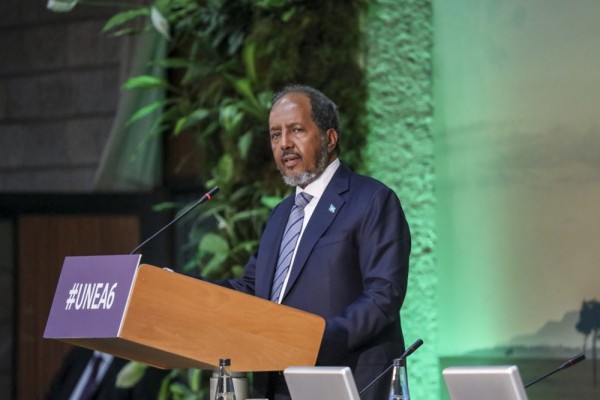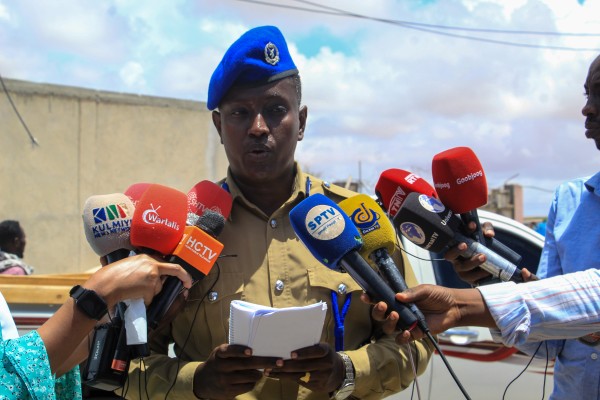Press freedom conditions across Somalia took another blow last week, with a spate of reported attacks against journalists both in southern Somalia and in the semi-autonomous region of Puntland, according to the National Union of Somali Journalists (NUSOJ) and other local news sources.
On Friday, 21 May, Islamist Al-Shabab militants raided the premises of Radio Somaliweyn in the Somali capital Mogadishu. The attack took place amid heavy fighting between the insurgents and government forces over the neighborhood in which the radio station is located. The militants entered the premises, and threatened the station’s technician, Abdulkadir Awad Ahmed, until he unlocked a room containing all of their equipment, which they then took with them.
“They did not tell us why; they just said, ‘Where is the equipment?” Samme Bogad, owner of Radio Somaliweyn, told IPI in a phone conversation from Gothenburg, Sweden, where he resides. “Without saying anything they just started harassing people. You can’t play with these guys.”
The station remains shut because there is no equipment available to broadcast. Meanwhile, insurgents and government forces remain locked in a violent back-and-forth over the Bondheere district.
“We are a bit confused why they just took the equipment without warning or explanation,” said Bogad. It is unclear why Radio Somaliweyn was targeted, because the station had adhered to the various edicts imposed on all radio stations in the insurgent-controlled areas – they had stopped airing music, and did not refer to the Transitional Federal Government in their reports.
Bogad said that the station’s journalists in Mogadishu were currently trying to negotiate with Al Shabab in order to get their equipment back, but so far without success.
On 25 May, a few days after the raid on Radio Somaliweyn, rival insurgent group Hizbul Islam detained three journalists in Afgoye, a town 30km east of Mogadishu.
The three reporters, Sheekh Adow Amin, Ahmed Yusuf Idaajaa and Mohamed Hussein Osman are all correspondents for Mogadishu-based radio stations, according to NUSOJ programme coordinator Mohammed Ibrahim. The reporters were arrested at the same time, but it is unclear where they were when arrested, or why. One anonymous Hizbul Islam officer was quoted by the Somaliweyn Media Center as saying: “To my knowledge, [they] have … been good journalists with superb conduct within the community.”
Meanwhile, two separate attacks against journalists were recorded on Wednesday 26 May in the semi-autonomous region of Puntland, according to a report from NUSOJ. All of the reporters involved in the incidents were covering the aftermath of heavy rains in the port city of Bossaso, which had resulted in mudslides, according to Ibrahim of NUSOJ. The Bossaso mayor had announced that a market for Khat (a plant whose leaves and buds are popularly chewed for their stimulant effect) was to be shifted outside town because of the mud, a move that proved unpopular with some sellers, Ibrahim told IPI. In both instances, journalists interviewing the sellers were attacked.
In the first incident, four journalists were detained by the military police (“Darawish”) and taken to the central police command. They were threatened at gunpoint and eventually released two hours later following the intervention of Bossaso’s mayor and other Puntland officials, Ibrahim told IPI.
The second set of journalists, ETN television cameraman Abdulkadir Harun Abdullahi and correspondent Osman Saalah Ismail from shuttered Mogadishu station Radio Somaliweyn, were detained and severely beaten by members of the Puntland Intelligence Service (PIS), NUSOJ reported.
Abdullahi suffered injuries to his kidney, face and left leg. “He told me that he’s not able to walk,” Ibrahim told IPI. It is unclear what wounds were sustained by Ismail.
“The events of last week constitute a further deterioration in the space for independent journalism in Somalia,” said IPI Director David Dadge. “All parties to the conflict must respect the right of journalists to bring news about Somalia to the local population and to the world at large.”


